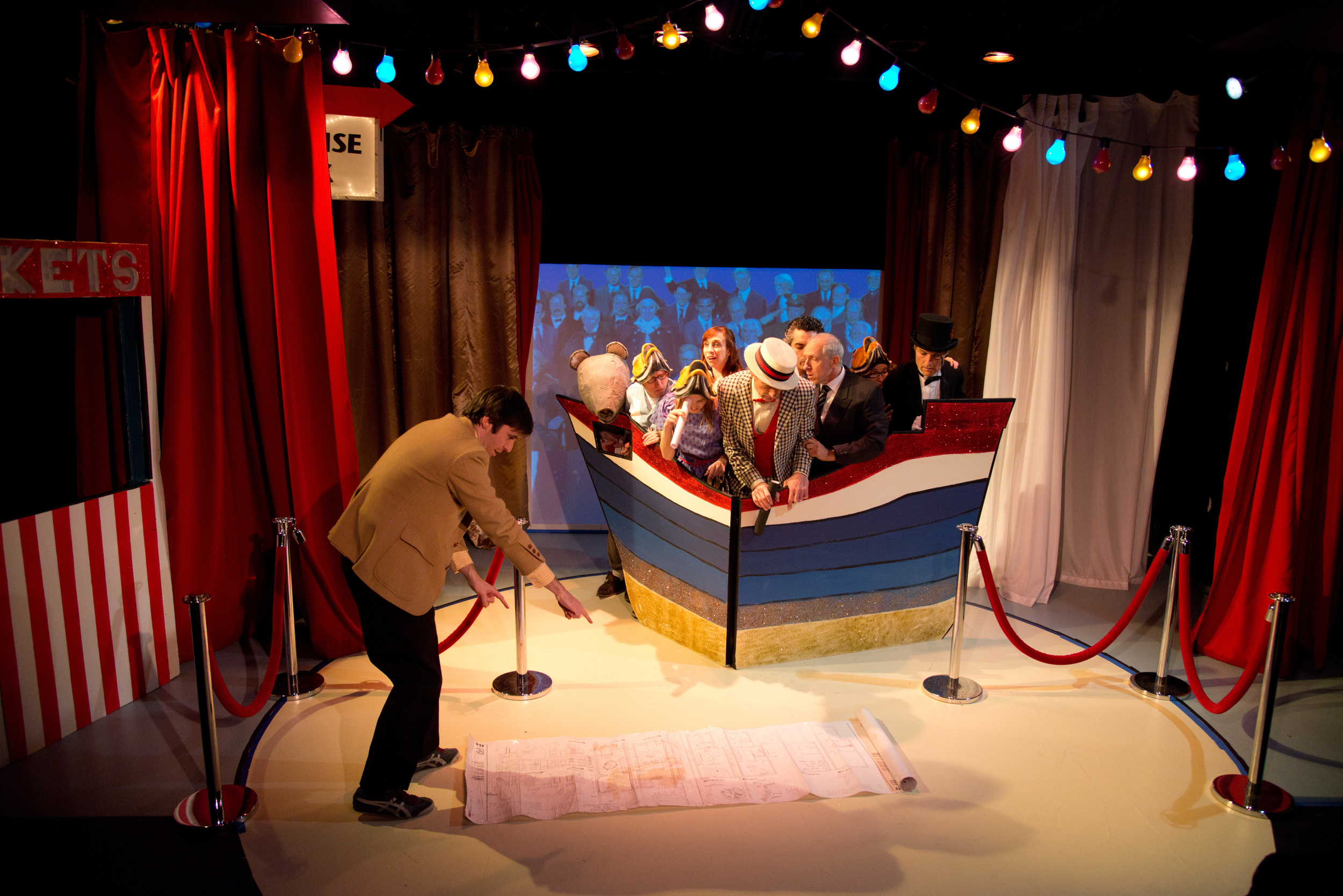






PARADISE PARK
by Charles Mee
Dir. by Tina Brock
The Walnut Studio 5, Philadelphia, 2013
set and video design
Anna Kiraly’s set was loud in color—mostly bright reds and whites—but in function was bewitchingly uncomplicated. It adopted the mercurial flow of the Charles Mee’s play into its function: with the removal or placement of a bench or two, and the shift of video projections or lighting cues, the same space becomes a forest, a dining room, a carnival ride, or a car on a highway.
Though the set was submissive to the action of the play, Mee’s setting is vital to the atmosphere the text creates. He uses the carnival—the labyrinthine, hyperactive, at times malicious Disneyland of Paradise Park—as a setting-off point for his explorations into the twin absurdities of human existence and traditional theater. It is within Kiraly’s easily-manipulated setting that Charles Mee’s text variously adopts, modifies, and scorns the habits of traditional theater to create his own dramatic form, to satirize the human struggle for meaning in art and in life, and to make some staggering statements about normality in America.